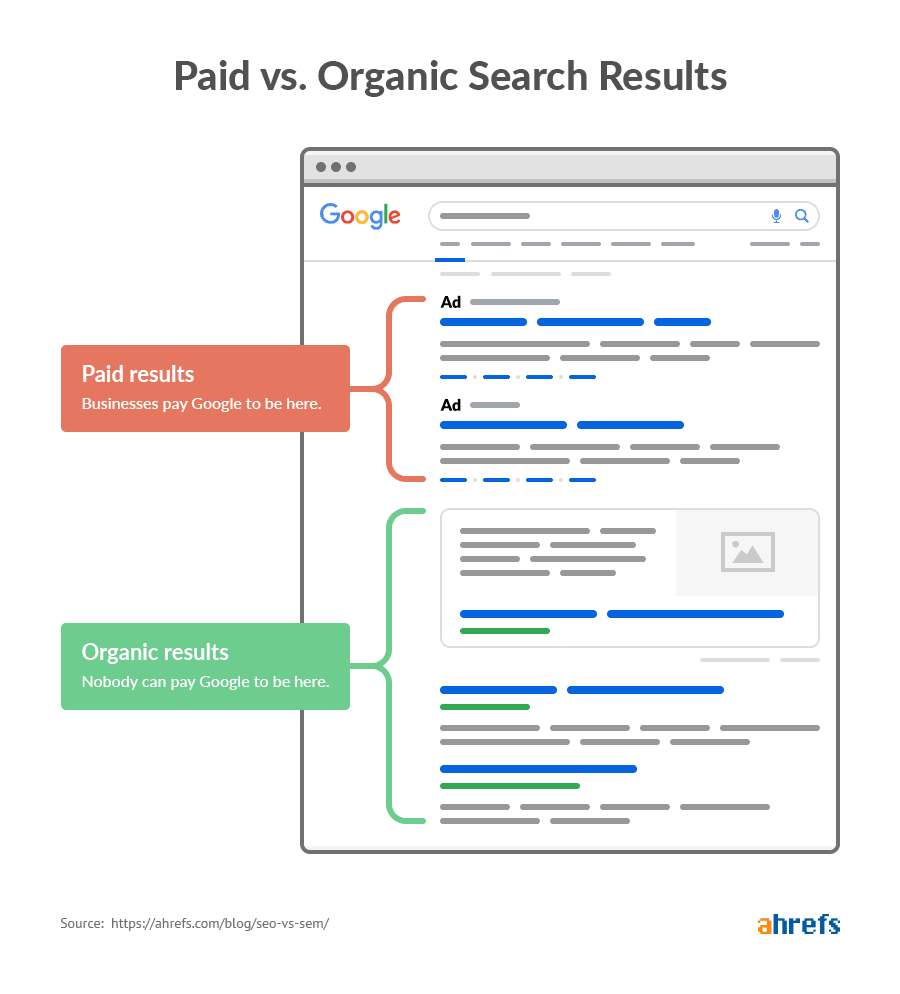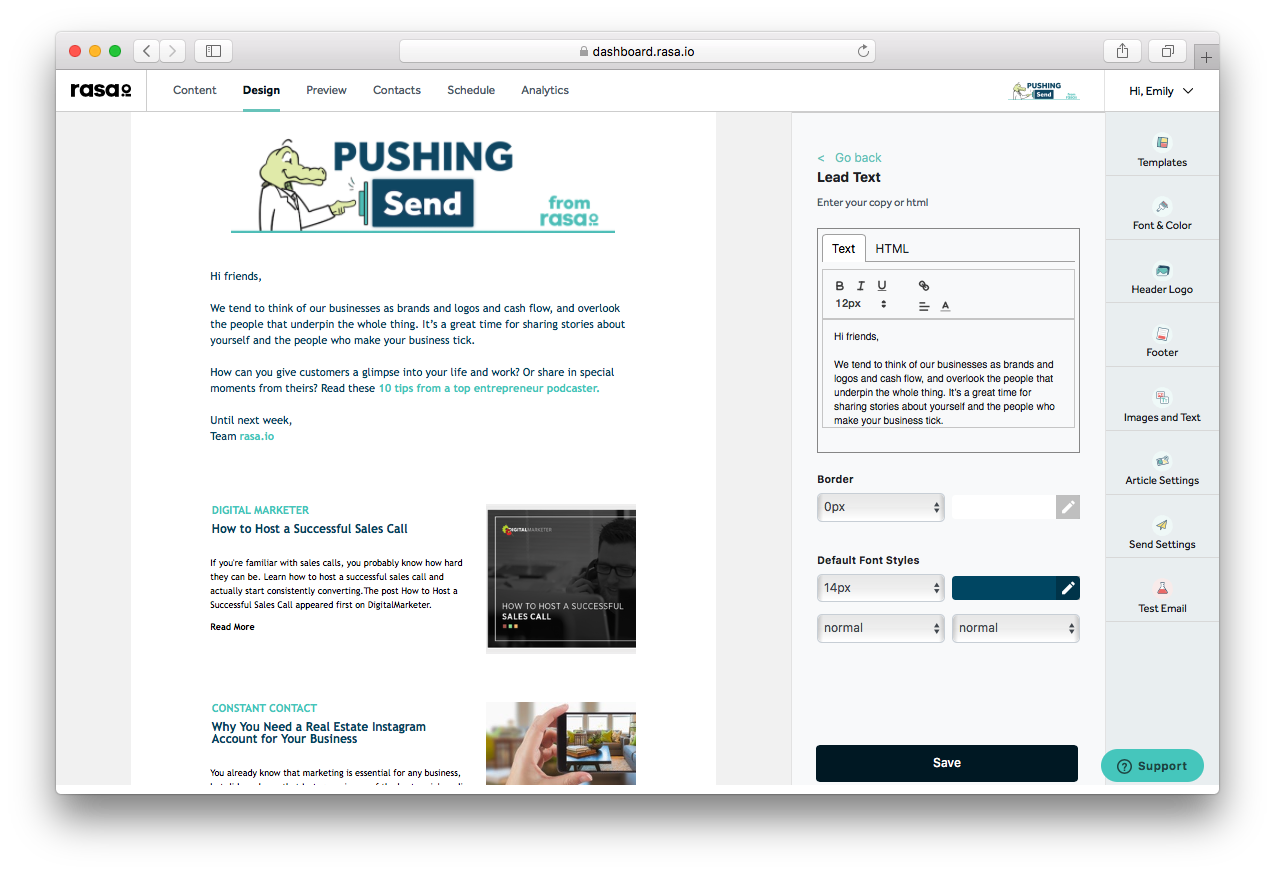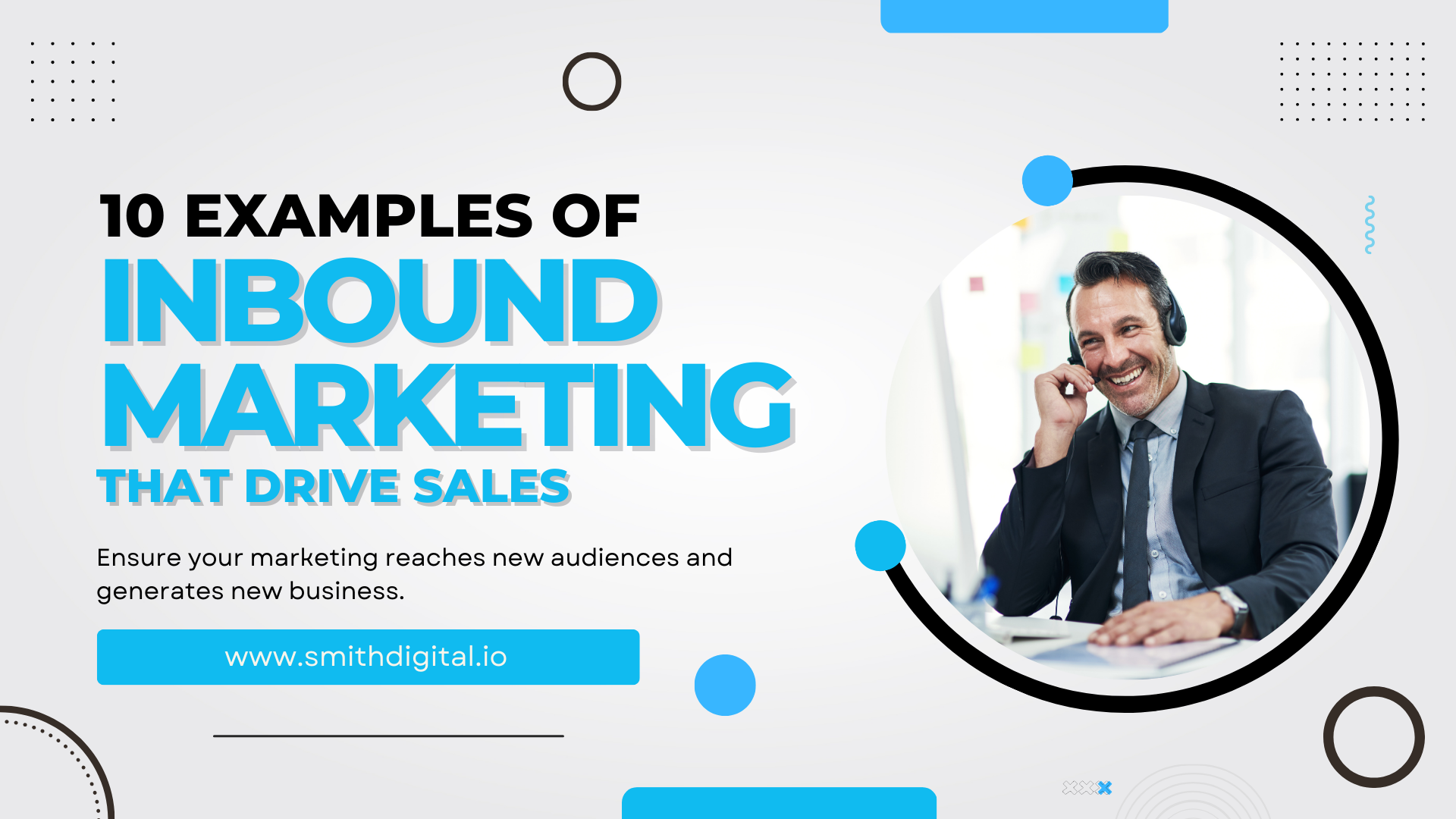Best Inbound Marketing Software & Tools in 2025
If you’re looking for the best inbound marketing software to manage campaigns, generate leads, and track ROI, this guide covers the top tools...
%20(23).png?width=302&height=302&name=_SD%20web%20assets%202025%20(500%20x%20500%20px)%20(23).png)
13 min read
Marketing
:
Aug 26, 2025 5:00:00 AM
Inbound marketing is a customer-centric methodology that includes inbound efforts across SEO, email marketing, social media strategy, and content marketing, aiming to attract customers through valuable, relevant information. This article showcases 15 effective inbound marketing examples that have driven significant growth for businesses, detailing strategies like SEO, content marketing, and personalization that yield real results.
In 2025, mastering inbound tactics like these will be essential to building a predictable, scalable pipeline of leads and customers. Whether you're just beginning or refining your inbound approach, these examples offer inspiration and practical insights for your strategy.
Inbound marketing is a customer-focused approach that draws audiences in with valuable content, rather than pushing messages out as traditional advertising does. Instead of using interruption tactics, inbound marketing leverages SEO, content marketing, email, and social media to attract, engage, and build trust with potential customers. When done properly this method creates a repeatable, scalable flow of traffic and leads, ultimately leading to higher brand loyalty and sustained business growth. Learn more in our guide to inbound marketing strategy.
Inbound marketing’s customer-centric approach not only reduces customer acquisition costs but also enhances lead quality and predictability, a huge advantage for growing businesses. By creating content that genuinely helps audiences, businesses can reliably build a pipeline of well-qualified leads. With inbound marketing strategies focused on each stage of the marketing funnel, companies can maximize their marketing budget, reduce customer acquisition costs, and better engage potential customers who are already interested in their offerings.
There are countless inbound marketing success stories from real brands that showcase the power of this methodology. Airbnb created travel blogs and neighborhood guides that both inspire readers and encourage bookings, blending content with conversion seamlessly. On the B2B side, HubSpot itself is a prime success story: its inbound playbook of free tools, templates, and academy courses not only attracts traffic but also builds long-term customer trust. These stories prove inbound isn’t limited to industry size—it works across B2B and B2C when customer needs are prioritized.
B2B inbound marketing campaigns often include webinars, industry reports, and case studies, while B2C campaigns lean heavily on personalization and storytelling. IBM’s B2B inbound campaigns use thought leadership content and gated reports to capture executive attention, while Starbucks leverages social media campaigns encouraging user-generated content to connect with customers. Both approaches rely on the same inbound principle: provide value, attract attention, and build long-term engagement through trust. These examples demonstrate how inbound can be tailored for different audiences while still driving measurable results.
These 10 examples of successful inbound marketing campaigns demonstrate valuable inbound strategies that can inspire your approach to attract customers, engage them, and drive lasting growth.
 Search Engine Optimization (SEO), a necessary aspect of inbound marketing, amplifies the organic visibility of a website in Search Engine Results Pages (SERPs). Essentially, it's the science and art of ensuring your site appears prominently in the organic results section when a user searches a relevant query. The higher your site ranks, the more traffic, conversions, and customers you can potentially gain.
Search Engine Optimization (SEO), a necessary aspect of inbound marketing, amplifies the organic visibility of a website in Search Engine Results Pages (SERPs). Essentially, it's the science and art of ensuring your site appears prominently in the organic results section when a user searches a relevant query. The higher your site ranks, the more traffic, conversions, and customers you can potentially gain.
SEO splits into two primary types:
On-Page SEO: These are actions taken on your website to boost its SERP ranking. This could involve optimizing your titles and meta descriptions, ensuring high-quality and informative content, and improving your website's navigability.
Off-Page SEO: This involves activities outside your website that influence your SERP ranking. Actions include building high-quality backlinks, maintaining active social media accounts, and guest posting on blogs with solid domain authority.
Keep in mind, SEO isn't an exact science. Rankings fluctuate over time due to algorithm changes and evolving trends. So, staying updated is key to maintaining your high position in SERPs.
Case Study: SEO & Inbound Marketing for ERP Software Companies

Initial Challenges and Goals: An ERP software client started with limited visibility and no clear inbound strategy for generating leads. With a new website and low domain authority, they needed a robust approach to reach potential customers effectively.
Crafting a High-Impact Approach: We implemented a foundational inbound setup using HubSpot's CMS and Marketing Hub, targeting high-intent keywords aimed at late-stage buyers. This involved content creation around topics like pricing and product comparisons, along with a guest posting campaign to strengthen domain authority.
Results: Within 12 months, organic traffic increased from fewer than 50 to over 2,000 visits per month, generating $4 million in revenue without paid ads. This illustrates the transformative power of SEO within a well-structured inbound framework.
Pay-Per-Click (PPC) advertising is another potent form of inbound marketing where businesses pay a fee each time one of their ads gets clicked. Unlike SEO, which is a marathon, PPC is more of a sprint, yielding almost immediate results. Plus, its targeting capabilities allow businesses to narrow in on specific demographics, efficiently reaching potential local customers.
However, PPC comes with its own set of challenges. Costs per click can sometimes be high, and if your ad budget isn't appropriately managed, you might find yourself not getting a return on your investment. Some businesses prematurely halt their paid ad programs when immediate results aren't apparent, leading to missed potential gains.
Moreover, while PPC can boost traffic, the conversion rates don't usually match up to those of organic results. Studies indicate PPC accounting for around 10-15% of clicks, while organic results can garner up to 80%, depending on the search query. Not to mention, PPC platforms can be tricky to navigate, often necessitating expert assistance to maximize the campaign potential.
Despite these challenges, PPC remains a valuable tool in a business's marketing arsenal. To see this in action, consider Sunbelt Atlanta Business Brokers, who found success with targeted PPC campaigns. Through careful management and expert guidance, they saw increased site traffic and improved conversion rates, even with PPC's inherent challenges. Learn more about their success story here: Sunbelt Atlanta Case Study.
Blogging's become a powerful tool in the inbound marketing arsenal, especially for B2B professionals. At its core, inbound marketing is all about attracting clients by creating valuable content tailored to their needs and interests. For consultants, blogging offers an excellent platform to showcase expertise, build authority, and address potential clients' pain points. By consistently publishing well-researched, insightful, and relevant content, consulting firms can position themselves as thought leaders and trusted advisors in their respective fields.
One of blogging's primary advantages is its ability to improve keyword acquisition and search engine rankings. By strategically incorporating industry-specific keywords and phrases into blog content, businesses can boost their visibility on search engines. This process, known as search engine optimization (SEO), increases the chances of attracting organic traffic from prospects actively searching for solutions the consulting firm offers. By understanding and leveraging the search intent of potential clients, consultants can craft blog posts that directly address the questions and challenges their audience faces, thereby increasing the odds of appearing in search results.
Moreover, blogging serves as a robust lead generation tool when implemented correctly. By offering insightful and practical advice, professional services firms can engage with their audience and build trust. Trust is crucial in the B2B sector, where decision-making processes are often more complex and involve longer sales cycles. A well-maintained blog can serve as a touchpoint for nurturing relationships with prospects, guiding them along the buyer's journey from awareness to consideration and ultimately to decision-making. Including calls-to-action (CTAs) within blog posts, such as inviting readers to download a white paper, sign up for a newsletter, or schedule a consultation, can effectively convert blog visitors into leads.
Content marketing is the practice of creating and sharing valuable, relevant content tailored to the needs and interests of a target audience. Unlike traditional advertising, content marketing focuses on providing information that educates, informs, and solves specific problems, building trust with potential customers over time. While blogging is a powerful foundation, effective content marketing extends to a variety of media, including videos, infographics, eBooks, webinars, whitepapers, case studies, and social media content. Each of these formats can be strategically used to engage audiences at different stages of the buyer’s journey, reinforcing credibility and establishing thought leadership.
In B2B, content marketing plays a vital role in attracting and nurturing high-quality leads, especially for complex products and services where buyers require deeper understanding before committing. By mapping content to each stage of the buyer’s journey, businesses can guide prospects from awareness to consideration, and ultimately, to decision-making. For example, an educational blog post or explainer video might attract new prospects in the awareness stage, while a more detailed eBook, whitepaper, or case study could support leads in the consideration phase. This progression not only strengthens the relationship with potential customers but also demonstrates expertise, aligning your business as a trusted partner capable of meeting their needs.
Moreover, content marketing enables data-driven optimization. By tracking metrics like content views, downloads, engagement rates, and lead conversions, companies can continuously refine their content strategy. Tools like HubSpot help manage and measure content effectiveness, providing insights that drive more targeted efforts over time.
Inefficiencies in Lead Generation: This client initially relied on in-house content creation and a third-party SEO agency but struggled with inconsistent lead quality and volume. Their content lacked the strategic alignment necessary to connect with their target audience effectively, and their marketing efforts weren’t optimized for attracting qualified leads.
Transforming the Inbound Framework: To address these challenges, we restructured the client’s content marketing strategy using HubSpot, tailoring content to each stage of the buyer’s journey. We introduced content formats that catered specifically to their target audience, including case studies, whitepapers, and informative blog posts. We also optimized forms and integrated chatbots to capture lead information more effectively, and implemented a guest posting strategy to strengthen domain authority.
Results: By aligning content with audience needs and optimizing distribution, the client’s monthly organic traffic grew from 500 to over 5,000. This created a consistent, high-quality lead funnel that ultimately built an eight-figure sales pipeline. By ranking in top positions for critical industry keywords, the client became an industry leader, achieving both significant traffic growth and an improvement in lead quality.

While being a dated tactic mail marketing remains an indispensable tool for connecting with prospects and nurturing existing relationships. At its best email marketing is all about delivering tailored content that resonates with your audience's unique needs and challenges. For management consultants and ERP resellers, email marketing provides a direct line of communication, enabling you to showcase your expertise, share valuable insights, and position your solutions as essential components of success.
The great thing about email marketing is that it allows you to segment your audience based on their industry, business size, or specific software needs, ensuring that every message hits the mark. Whether you're introducing a new software solution, offering a demo, or sharing a success story, targeted email campaigns can drive significant engagement and conversion rates. By leveraging data analytics, you can track open rates, click-throughs, and conversions, refining your approach to maximize impact.
Furthermore, email marketing supports the nurturing of long-term relationships. Regularly scheduled emails that deliver consistent value help keep your brand top of mind, ensuring that when your prospects are ready to make a decision, your solutions are their first choice.
eBooks have emerged as a valuable element in the inbound marketing toolkit, with the growing preference for digital reading. As a downloadable digital book that can be accessed across various devices, an eBook transcends the boundaries of time and location, offering convenience that traditional print media can't match.
But eBooks are much more than just digital versions of print books. They provide an innovative platform for businesses to engage their target audience, sharing valuable knowledge, promoting products or services, and gathering leads. They are an effective method to nurture potential customers on their buyer's journey by providing detailed insights or solving specific problems related to your industry.
eBooks also provide a bonus advantage of being SEO-friendly. By using targeted keywords and creating valuable content, eBooks can improve your online visibility, making it easier for your prospective customers to find you.
For businesses, eBooks can be an effective content marketing tool. They can be used to promote a company's products or services, generate leads, or build brand awareness. eBooks can also be optimized for search engine optimization (SEO), making them easier for potential customers to find online.
A white paper is a comprehensive document that explores a specific industry issue, product, or technology, offering insights, analysis, and solutions backed by rigorous research and expert knowledge. Unlike typical marketing materials that might prioritize brevity and catchy slogans, white papers aim to educate their audience by providing detailed information, technical data, and evidence-based arguments. They often address complex problems or emerging trends, offering a thorough examination that positions the authoring organization as a thought leader in their field.
When strategically distributed, these documents can capture the interest of potential clients or partners, encouraging them to provide their contact information in exchange for access to the valuable content. Additionally, white papers can be repurposed across various channels, such as webinars, blog posts, and social media campaigns, enhancing their reach and impact.
 Social media marketing has become an indispensable tool for driving business growth, particularly in the B2B sector. By harnessing the power of platforms such as LinkedIn, Instagram, and Twitter, businesses can reach decision-makers and industry professionals with precision and efficacy. LinkedIn, for instance, offers unparalleled opportunities for B2B marketers to engage with a highly targeted audience. Through well-crafted content and strategic networking, companies can position themselves as thought leaders, fostering trust and credibility. Sharing insightful articles, industry news, and success stories not only enhances brand visibility but also encourages meaningful interactions with potential clients and partners.
Social media marketing has become an indispensable tool for driving business growth, particularly in the B2B sector. By harnessing the power of platforms such as LinkedIn, Instagram, and Twitter, businesses can reach decision-makers and industry professionals with precision and efficacy. LinkedIn, for instance, offers unparalleled opportunities for B2B marketers to engage with a highly targeted audience. Through well-crafted content and strategic networking, companies can position themselves as thought leaders, fostering trust and credibility. Sharing insightful articles, industry news, and success stories not only enhances brand visibility but also encourages meaningful interactions with potential clients and partners.
Moreover, targeted advertising on social media platforms allows businesses to reach specific demographics, ensuring that marketing efforts are concentrated on the most relevant audiences. This precision targeting reduces wasted ad spend and increases the likelihood of conversion. Social media also facilitates direct communication and engagement, enabling businesses to address inquiries, gather feedback, and nurture relationships in real time. By creating compelling and shareable content, businesses can amplify their reach as satisfied customers and partners spread the word, further enhancing brand recognition and loyalty.
Social media analytics provide invaluable insights into audience behavior and preferences, allowing businesses to refine their strategies and make data-driven decisions. By monitoring engagement metrics and tracking campaign performance, companies can continually optimize their efforts to achieve the best possible results. In summary, social media marketing is a powerful catalyst for B2B growth, offering a multifaceted approach to increasing brand awareness, building relationships, and ultimately driving business success.
 Newsletter marketing is similar to email marketing but it involves sending out a newsletter to customers or prospects on a regular basis instead of a templated email. Newsletters can be used to promote new products or services, offer special discounts, or simply keep customers up-to-date on what is happening with your industry.
Newsletter marketing is similar to email marketing but it involves sending out a newsletter to customers or prospects on a regular basis instead of a templated email. Newsletters can be used to promote new products or services, offer special discounts, or simply keep customers up-to-date on what is happening with your industry.
One of the main benefits of newsletter marketing is that it helps to reinforce your brand. By regularly sending out newsletters, you can remind customers about your products or services and keep your business top-of-mind.
One newsletter tool we've been having a great experience with is called Rasa.io. Rasa.io is an AI-powered newsletter platform that helps ensure more newsletter clicks and engagement. Rasa.io helps you create engaging, personalized newsletters that are sent to your subscribers at the right time. Rasa.io also provides real-time analytics so you can see how your newsletter is performing and what readers are most interested in.
Conversion rate optimization (CRO) focuses on increasing the percentage of website visitors who take a desired action, such as filling out a form, signing up for a demo, or engaging with a chatbot. Across industries, average website conversion rates typically range between 2-5%, although this varies widely depending on the industry, audience, and type of action requested. For instance, the software and SaaS industry often sees conversion rates between 7-10%, while e-commerce generally averages around 2-3%. These figures provide a useful benchmark when evaluating the effectiveness of CRO efforts.
The benefits of CRO are substantial, especially for companies looking to maximize lead generation from organic and paid traffic. By improving conversion rates, businesses can get more qualified leads without necessarily increasing traffic volume—making it a cost-effective way to increase revenue. CRO also enhances ROI on paid campaigns by converting a larger percentage of ad clicks into actionable leads, effectively lowering the cost per acquisition.
In practice, CRO involves analyzing user behavior to identify friction points, optimizing page elements like calls-to-action and form design, and conducting A/B tests to determine which versions drive higher engagement. Even small adjustments can yield significant results, enabling companies to make the most of their organic and paid traffic while providing a better user experience for potential customers.
High Traffic, Low Conversions: This client had consistent organic traffic but struggled with a low conversion rate of around 1%. They needed a tailored CRO approach to turn that traffic into leads.
Optimizing Conversion Pathways: We revamped their website's conversion pathways by incorporating interactive landing pages, chatbots, and simplified forms to enhance lead capture. Additionally, integrating Typeform with HubSpot further optimized the lead management process.
Results: Conversion rates jumped from 1.18% to 5.32% in just eight months—a 350% increase—highlighting how optimizing the user journey can effectively drive lead generation and boost conversion rates.

Evaluating the success of an inbound marketing campaign requires tracking metrics that reflect how well your inbound efforts are resonating with potential customers. Key metrics to monitor include website traffic, lead volume, and conversion rates, which together provide a holistic view of campaign performance. Increased website traffic indicates that content is attracting visitors, while lead volume and conversion rates reveal how effectively the content is engaging and moving prospects through the sales funnel.
Using platforms like HubSpot for tracking and analytics is especially effective, as it offers real-time insights into each campaign element. HubSpot’s detailed reporting tools make it easier to see which inbound strategies are driving engagement and which need refining. Over time, tracking these metrics allows for data-driven adjustments that ensure each inbound marketing campaign is progressively optimized, helping you achieve measurable growth.
Effective inbound marketing campaigns show that combining targeted content with a data-focused strategy is key to growth. Real-world examples underscore that building domain authority through on-page SEO and strategic backlinking can significantly boost organic search rankings, generating valuable leads and turning visitors into customers.
Migrating clients to HubSpot has been pivotal, providing integrated tools like interactive forms, chatbots, and reverse IP lookup tools (e.g. Leadfeeder, RB2B, etc.) to drive conversions. These tools help capture more leads and provide deeper customer insights, elevating conversion rates and enabling stronger engagement.
A close partnership between marketing and sales, especially with BDRs, amplifies the impact of inbound efforts. This alignment drives ROI by nurturing leads more effectively, transforming campaigns into revenue-generating success stories.
A: Inbound marketing campaigns are usually multi-channel efforts that combine content, SEO, and lead capture. HubSpot’s inbound content hub is a classic example, offering free templates, calculators, and reports that attract high-intent visitors. On the B2C side, Spotify Wrapped has become an iconic campaign, turning user data into personalized, shareable stories that create massive organic buzz. These campaigns illustrate how inbound efforts both educate and delight audiences. For a deeper breakdown of strategy, see our resource on 6 Marketing Strategies for Technology Companies.
A: Correct examples include blogging, SEO-focused landing pages, downloadable eBooks, and webinars—all designed to attract, educate, and convert potential customers. Unlike outbound tactics, these initiatives provide value first, which builds trust and makes conversion more natural. To explore practical applications, our Inbound Marketing Services page outlines tailored approaches for different industries.
A: Brands like Airbnb, HubSpot, and IBM have scaled dramatically through inbound methods. Airbnb grew its platform by creating city guides and travel inspiration blogs that subtly funneled readers into booking journeys. HubSpot leveraged free tools, guides, and certifications to dominate organic search and capture leads at scale. IBM built thought leadership through research-backed whitepapers and webinars, solidifying its brand authority while generating enterprise leads. For implementation tips, see our HubSpot Content Hub Onboarding guide on setting up scalable content systems.
A: While both focus on creating value, the execution differs. B2B inbound campaigns often rely on in-depth content like webinars, whitepapers, and industry reports to educate decision-makers with long sales cycles. In contrast, B2C inbound marketing leans on personalization, interactive content, and social storytelling. For example, a B2B SaaS company may host a webinar series on compliance, while a B2C retailer may launch an Instagram campaign showcasing user-generated content to build loyalty. To choose the right stack to execute either approach, check out our guide to the Best Inbound Marketing Software Tools.
At SmithDigital, we specialize in helping businesses like yours build effective, scalable inbound marketing strategies that deliver real results. Whether you’re looking to implement HubSpot, optimize conversion rates, or design content that resonates with your target audience, our team of experts is here to support you every step of the way. Let’s work together to create an inbound marketing approach that drives sustainable growth for your brand. Contact us today to start building a strategy that transforms leads into loyal customers.

If you’re looking for the best inbound marketing software to manage campaigns, generate leads, and track ROI, this guide covers the top tools...

Inbound marketing for accountants starts with visibility—without it, firms risk being overlooked by potential clients searching for trusted...

If you've already invested in a digital marketing strategy for your business, you're probably hoping to see impactful results. You may still be...